Thinking about the Ten Plagues is painfully on the nose this year. It feels like Purim, a holiday centered around joy, community, dancing, theater, took place a year ago.
It was three weeks ago.
And yet. Somehow, it’s time for one of the biggest holidays of the year, one of my favorites, one that most Jews celebrate with big family gatherings – and somehow, we’ll mark the days, and find some ways of connecting and remembering and observing. Usually we remember that we suffered, but this year… we’ll be suffering, seeing others suffer from a distance, and will be anticipating more suffering.
Last year I posted a colorful recipe with Pynk Pickled Eggs and Vegetarian Chopped Liver, and I’m hoping to make those dishes again, but this year I think we’re going to go back to basics. The most basic mitzvah of Passover is to eat the Bread of Affliction – so let’s lean into the ancestral trauma and make our own matzo.
If you want a refresher on the Passover story, I highly recommend the Dreamworks animated musical movie Prince of Egypt, available streaming on Hulu.
I’ve never made matzo before, and am vaguely aware that there are strict kosher laws around it. To be fully kosher for Passover, store-bought matzo uses grain grown in special fields and overseen from seed to final packaging by rabbis. I talked to rabbinical student Frankie Sandmel to get some advice about making matzo as a Jew interested in capturing the spirit of Passover without fully following Orthodox standards.
Frankie Sandmel is a rabbinical student who generously shared their time and knowledge to answer the questions I had. I asked what steps a non-Orthodox Jew can take to make matzo that fulfills the spirit of the law if we’re not going to grind the wheat ourselves?
They recommend “keeping within the eighteen minutes when actually getting down to cooking evokes the haste with which our ancestors made matzo in the story. If your goal is to embody that part of the narrative – we have to get out, we have to make the bread as fast as possible – plus it’s a fun challenge to set an eighteen minute timer and see if you can get it in the oven in that period of time.” The number eighteen, as well as being an approximate of the amount of time dough has before starting to rise, is the numeric equivalent of the Hebrew letter Chai, which represents life.
Personally, for me Passover is a holiday where I usually keep much stricter kosher standards than I do in my normal life – for example, I follow the Ashkenazi tradition of not eating kitniyot, or foods that could be mistaken for the five forbidden grains, including rice and legumes. Given that I know it doesn’t make sense to start with and this year is already filled with anxiety and fear, this will likely be the year to break that habit, but I’m going to have a lot of feelings about it. Many of us will have different versions of feelings about changing the way we observe while figuring out how to observe in tumultuous circumstances. I asked for advice, and Sandmel shared their perspective that “the law is not meant to make you suffer. So especially in this moment when grocery stores are unpredictable, many of us live in communal houses with non-Jews, so cleaning for Passover is much more complicated when not going to stay with family. Being a little more forgiving then you might be in other circumstances is still in the spirit of the holiday. Passover has very visceral and deep associations for many of us, especially for those of us who grew up celebrating or adopted them and adopted the gravity of them. Passover is a particularly charged holiday to be lenient about.”
For those of us who will be celebrating Passover remotely or without family for the first time, Sandmel recommends connecting through food, or “thinking of other traditions that you have in your family seder that you might want to bring to whatever community you have access to, even if it’s just you and your roommates.” The people around us, whether or not they celebrate Passover, will want to help make it a meaningful experience. And of course, call your grandparents and other elder members of your family or community that you would otherwise be seeing! We can still connect from afar, even if we can’t physically celebrate together this year.
Homemade Matzo, Bread of Affliction
We’re going to make matzo! It will not be fully kosher for Passover – if you want full adherence to kosher standards, please make sure to purchase appropriate matzo. However, I found that making it was a process that connected me to the haste and stress that it is meant to commemorate, and quickly yielded a tasty, crisp matzo.
Ingredients
Flour and water
Tools
Cookie sheet, rolling pin, fork, bowl, measuring cup, tongs, oven mitt
Recipe
1. Preheat oven to the highest temperature it can go. For my oven, it was 550 F. Place a cookie sheet in the oven when preheating begins so that it will also preheat. (Depending on how you observe Passover, you may want to cover the cookie sheet with aluminum foil).
2. Prepare a clean surface, a rolling pin, and a fork. Wash your hands thoroughly.
3. Measure out your flour and water. Don’t combine them yet! The basic ratio is 3 1/4 flour to 1 water; since that’s way too much to actually do for one person, I did 1 cup flour to 1/3 cup water (plus an extra teaspoon if necessary). I had a bit of extra time and tried to double that for the next batch and ran out of time while knocking multiple things off the table, so I’d recommend going for a maximum of 1 1/2 cups flour (and 2/3 cups water) for one person making this until you get the hang of it.
4. Once everything is in place, set a timer for eighteen minutes. We’re going to get it into the oven before it goes off!
5. Add water to flour and mix. You can use a spoon but you’ll end up having to move to kneading by hand quickly.
6. Once combined, divide into small pieces slightly smaller than your palm – one cup of flour becomes four pieces; 1 1/2 cups becomes six. Take one of the pieces and knead for 30-90 seconds until it becomes soft and pliable. I did this by kind of… tossing them between my hands and squeezing? There may be a more elegant solution.
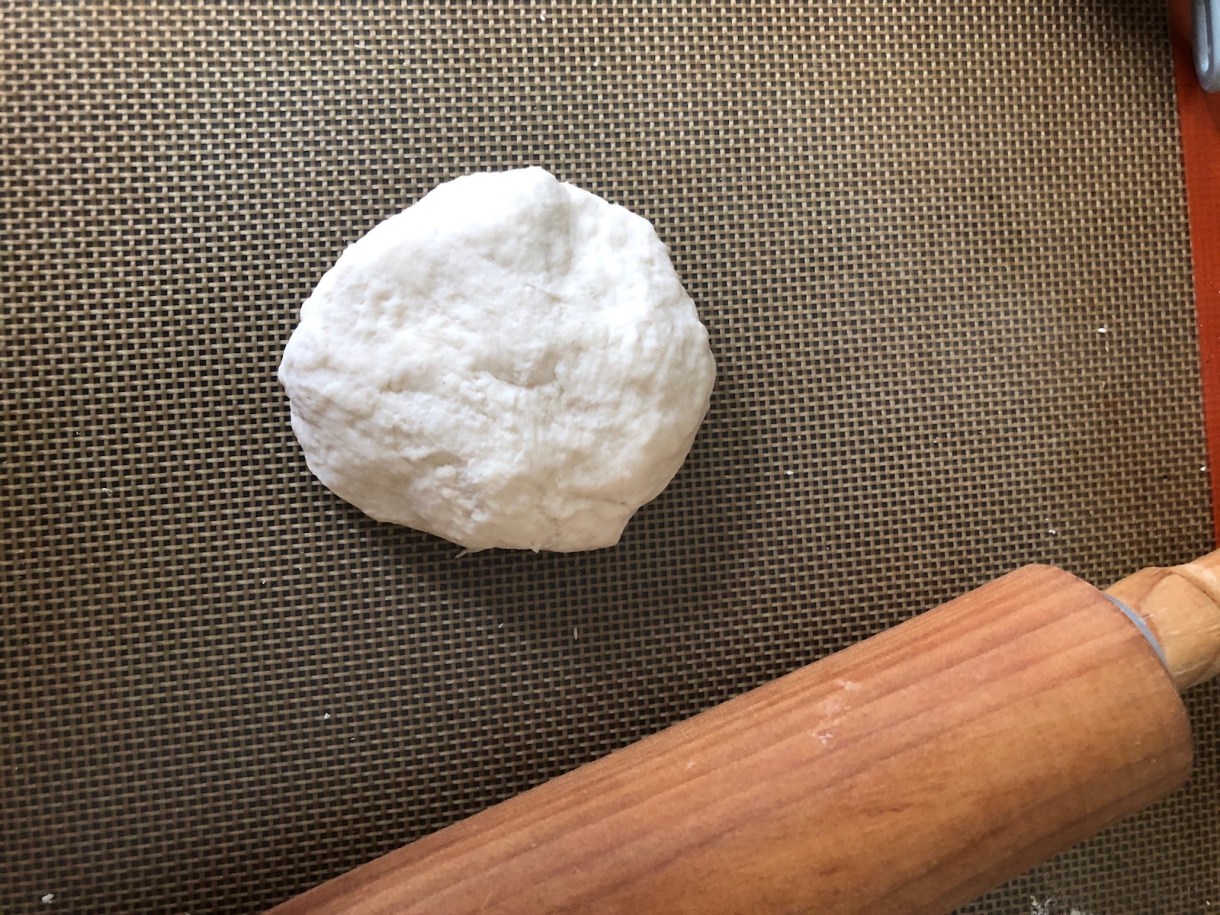
7. Use your rolling pin to roll out the dough as thin as possible; it should end up about 6-9 inches wide. Do not add more flour to keep it from sticking! Use your fork to poke holes in a straight line across about every centimeter.
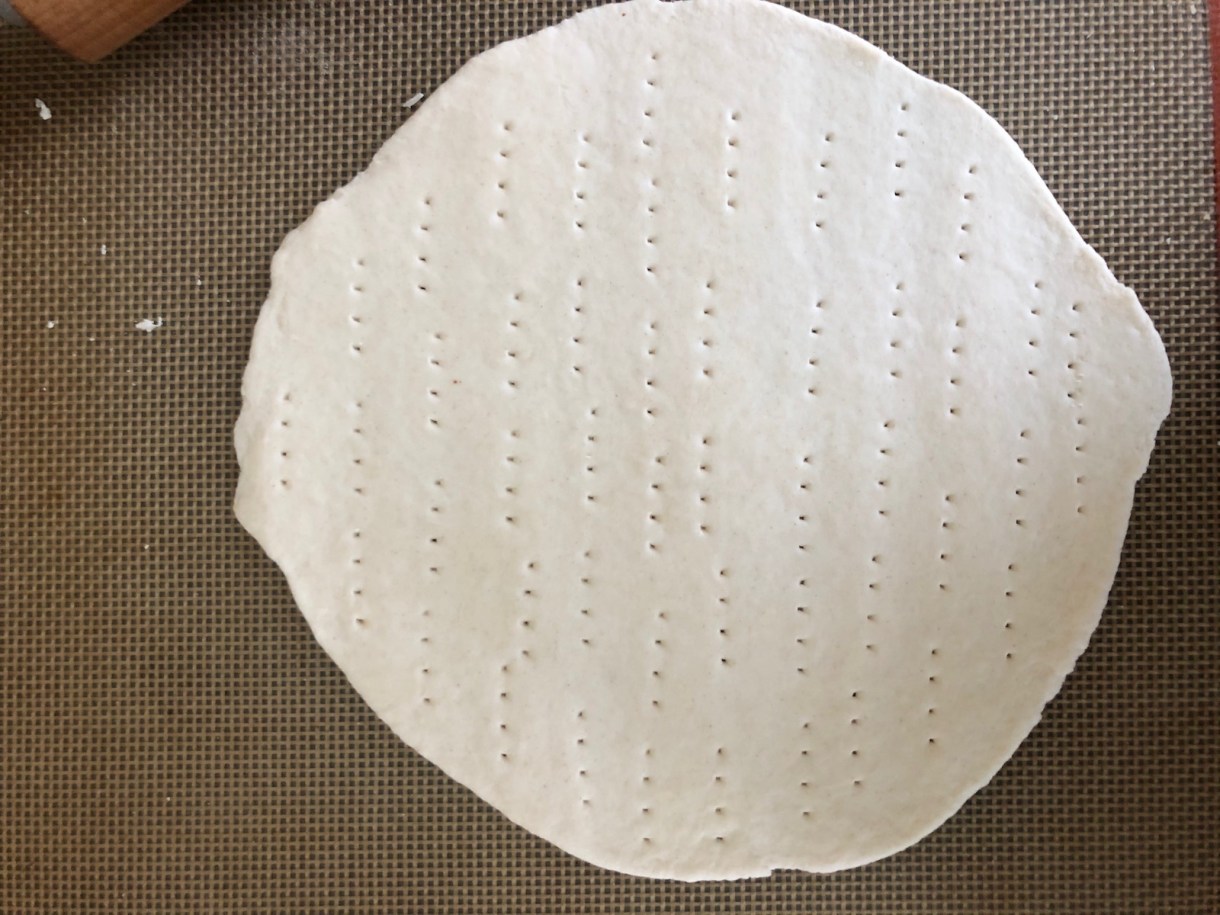
8. Repeat for all small balls of dough.
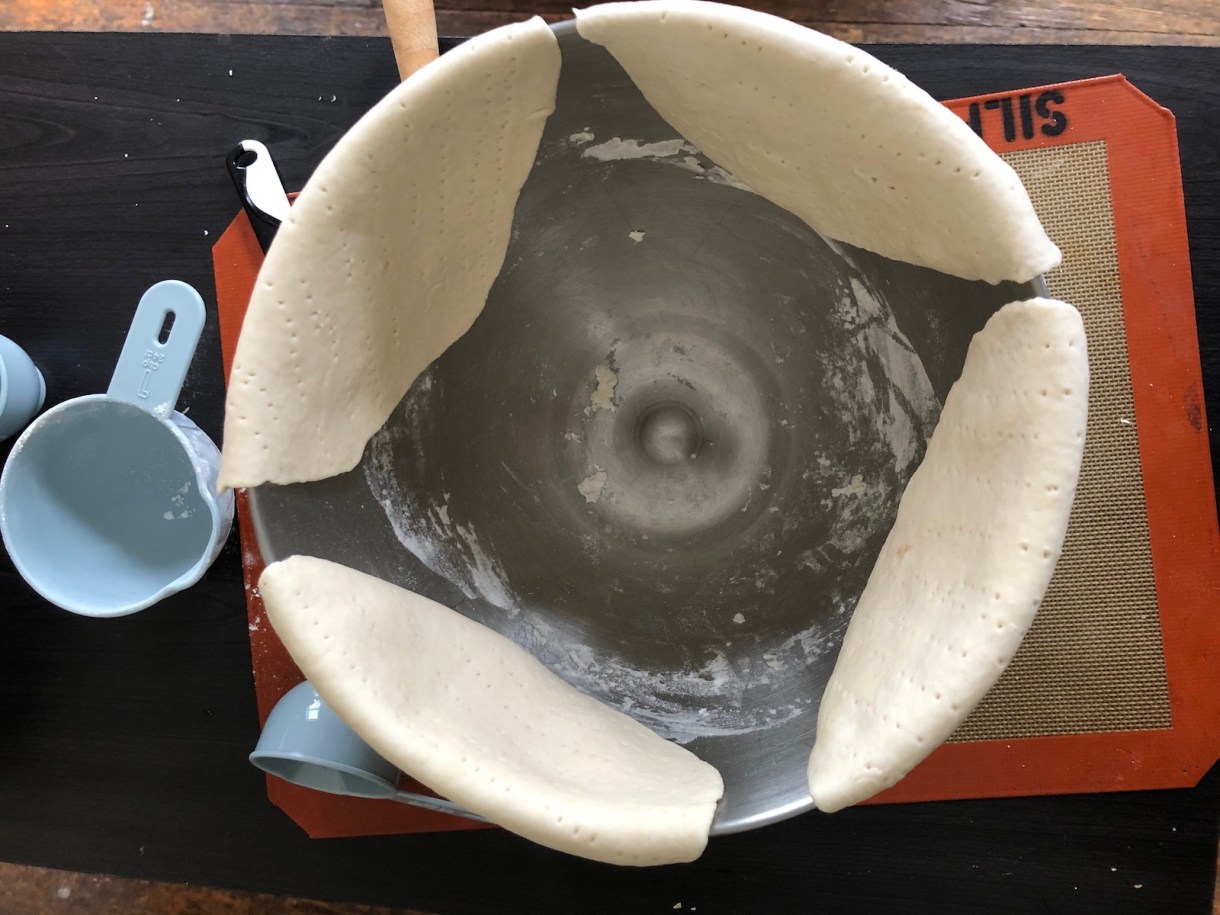
9. When ready (and it’s less than 18 minutes) open the oven and carefully (with an oven mitt!) remove the cookie sheet. Place the matzo on the sheet. They can touch but should not overlap. Bake until some browning begins; flip with tongs and bake for the same amount of time on the other side. It took about 4-5 minutes on each side in my oven; at the higher temperatures that are traditional, it takes 2-3 minutes total (including the flip).
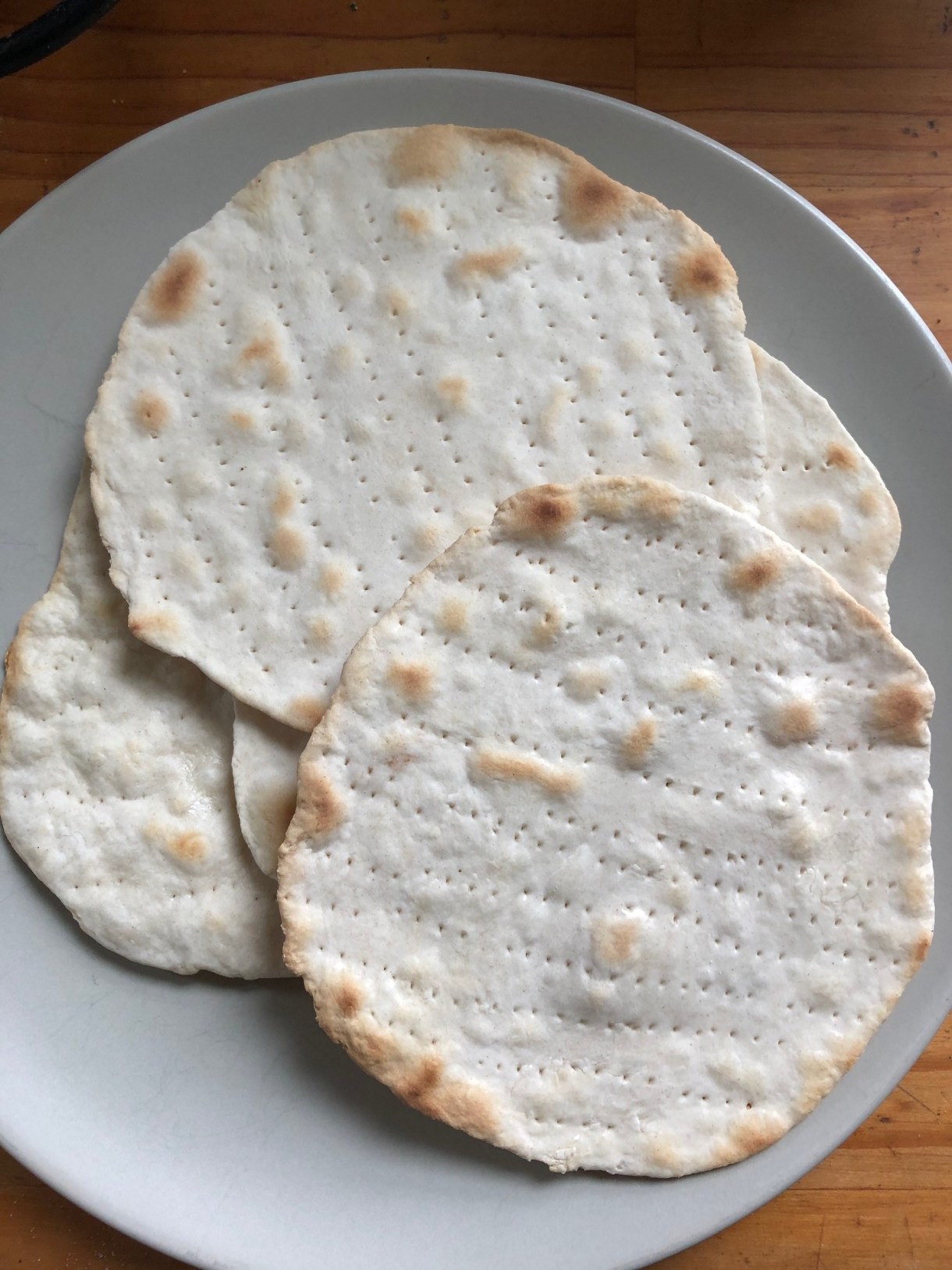
10. Offer a matzo that didn’t turn out quite right to your cat for inspection and let the obligate carnivore be thoroughly disgusted and confused.
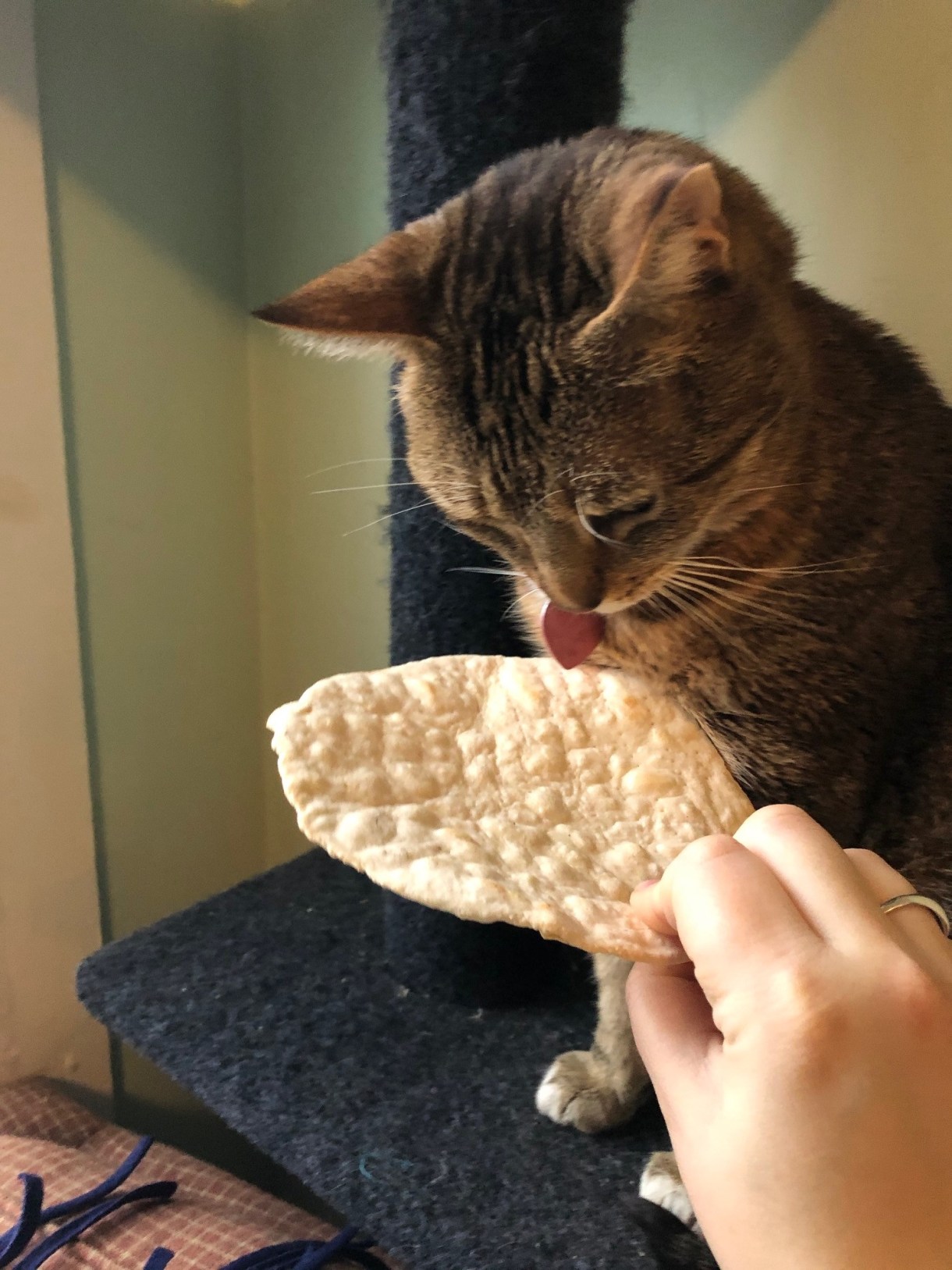
11. I offer you the edit to the conclusion of the Haggadah that I’ll be making this year: instead of “Next year in the promised land,” I’ll be wishing “next year in person.” I’m keeping you all in my thoughts. If you don’t have a group to celebrate with, DM me on twitter for an invitation to a Zoom Queer Seder that my friend and I are hosting.
This year, Passover begins the evening of Wednesday, April 8 and ends in the evening of Thursday, April 16.



Thank you! I tried out this out, I had to add some extra water and it took me a couple of tries to get them thin enough. I will definitely try again later this week.
My cat actually ate a substantial piece of one of the “failed” ones and looked very pleased with himself :)
hah! amazing, glad your cat got to enjoy too!
i’m so moved by this, ari. thank you for helping us. <3
<3
Can’t wait to celebrate passover with you!
Same! Thanks for hosting queer seder for so many years, and remotely this year!
ari this is beautiful ty!!
wow thank you, means so much coming from you!
Not a rabbinical student but pikuach nefesh, if considering applying it to your kitniyot situation helps any
yeah – I’ve been appreciating that post going around on facebook about how anything we scrounge this year will be the MOST kosher for passover we’ve ever eaten
As a newly-single trans queer also newly navigating some Jewish Feels, you inspired me to make my own matzo before attending a Zoom seder tomorrow! They are pretty janky but seem perfectly in the spirit of Passover.
“pretty janky but perfectly in the spirit of passover” is a whole mood right now
Hey – and you can always just make matzo brei if its completely inedible! thanks for the recipe. I’m going to try this tomorrow.